
Walter Johan Borg, born 21 June 1870 in Jakobstad, Finland; died 6 June 1918 in Petrograd, was a Swedish-speaking Finn, a merchant, idealist and socialist.

Walter Johan Borg, born 21 June 1870 in Jakobstad, Finland; died 6 June 1918 in Petrograd, was a Swedish-speaking Finn, a merchant, idealist and socialist.
The same year Walter Borg was born his father (according to the parish book) escaped to America. At that time this was not uncommon among young men who received call-up orders to the Russian army. In 1881 Walter moved with his mother from Jakobstad to her hometown Vaasa. In 1890, he received a final grade of Raahe Burgher and Trade School, a four-year mercantile institution with a good reputation. In 1894 Borg moved from Vaasa to Hanko, where he was employed as a clerk. There he married Ida Ojala on March 20, 1894. The couple had six sons and two daughters. In 1896 he moved his family to Vaasa. From Vaasa the family moved in 1900 to Tampere and from there to Turku. In Turku, he was employed by the Bore Company as head of its harbor offices. After a few years he resigned and founded in 1898 his own agency in the food industry.
It is not known when Borgs political engagement began, but it was as an activist, he first made his name. Through his employment at the Bore Company he could help many Russian revolutionaries who fled via Finland from Russia, among them Lenin.
The Swedish Workers' Association of Turku was founded in 1903 and Borg became a member of it. However, he never became a prominent figure in the association and let alone any political protagonist. Because of a progressive lung disease his involvement was restricted.
The newspaper Arbetet (The Work), which was founded in 1909, committed Borg strongly. He became the newspaper's driving force and soon he managed the entire magazine. He never undertook the post of responsibility and it was respected, probably for his bad health's sake and for the sake of his own company. His brother in law Janne Ojala who undertook this post did not even serve a year before he was charged with lese-majesty and was serving a six-month prison sentence, the same thing happened to the successor Ivar Hörhammer.
The editing of the magazine fell to Borgs lot while he also was its most hard-working writer. So he continued to edit the magazine for years and years until he could no longer, and he continued to write even longer. The image of Walter Borg lying in bed at 40 degrees fever and dictating his articles for his wife has gone to posterity.
With the strike in November 1917 culminated the events in Finland that had been triggered by the March Revolution in Russia the same year. Walter Borg had already in 1916 for health reasons, resigned as the newspaper's editor. But he still wrote, and when he did, especially in 1917, it was obvious that he was of a revolutionary spark. He had taken sides. The two brothers in law Walter Borg and Janne Ojala had always been a little further out on the left wing than most of the paper's other employees, and that they chose the storm when it arrived, doesn't really surprise.
When the war broke out Walter Borg was, as often before, at Nummela sanatorium, but this time he did not stay for long. The red commander in Turku offered him the post as head of the Turku office of the Bank of Finland - and he accepted.
In early April 1918 the Germans landed in Hanko and Loviisa and began their advance towards Helsinki. When Tampere also shortly afterwards fell, the war was lost for the reds and the retreat eastward began. Refugees fled by train from Turku. On the night of 8 April the first train with refugees left Turku and on it was Walter Borg.
Like many other refugees Walter Borg eventually ended up in Petrograd (now St Petersburg). It was here he wrote his diary. From 22 April the character of the diary changed and was now written in the form of daily letters to his wife Ida. The diary ends abruptly. The reason can be found in the first of two letters Karin Strindberg (also refugees in Petrograd) wrote to Ida Borg.
”It is my unspeakable heavy duty to tell You that our beloved friend and comrade Walter Borg died of pneumonia June 6. On 26 May, he suddenly got an acute haemorrhage, which took much of his strength, the fever rose high and sustained, and on the 30th he was transferred to a very good private hospital where the care was the best.”
— Anna Bondestam: Walter Borg (1870–1918), grosshandlare and revolutionary
Karin Strindberg sent his diary and other belongings to Ida Borg that same summer.
This is a translation of the same article in Swedish Wikipedia.
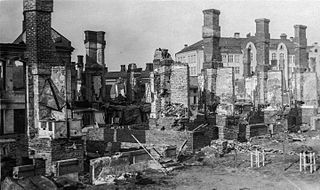
The Finnish Civil War was a civil war in Finland in 1918 fought for the leadership and control of the country between White Finland and the Finnish Socialist Workers' Republic during the country's transition from a grand duchy of the Russian Empire to an independent state. The clashes took place in the context of the national, political, and social turmoil caused by World War I in Europe. The war was fought between the Red Guards, led by a section of the Social Democratic Party, and the White Guards, conducted by the senate and those who opposed socialism with assistance late in the war by the German Imperial Army at the request of the Finnish civil government. The paramilitary Red Guards, which were composed of industrial and agrarian workers, controlled the cities and industrial centers of southern Finland. The paramilitary White Guards, which consisted of land owners and those in the middle- and upper-classes, controlled rural central and northern Finland, and were led by General C. G. E. Mannerheim.
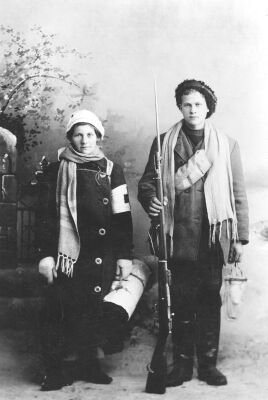
The Red Guards were the paramilitary units of the Finnish labour movement in the early 1900s. The first Red Guards were established during the 1905 general strike, but disbanded a year later. After the Russian 1917 February revolution the Red Guards were re-established and in the 1918 Finnish Civil War they formed the army of Red Finland. The combined strength of the Red Guard was about 30,000 at the beginning of the Civil War, peaking at between 90,000 and 120,000 during the course of the conflict. The number included more than 2,000 members of the Women's Guards. In May 1918, up to 80,000 Reds were captured by the victorious Whites, 12,000 to 14,000 of them died in the prison camps due to execution, disease and malnutrition. A majority of the Reds were finally pardoned in late 1918.

The Battle of Gangut took place on 27 JulyJul./ 7 August 1714Greg. during the Great Northern War (1700–1721), in the waters of Riilahti Bay, north of the Hanko Peninsula, near the site of the modern-day city of Hanko, Finland, between the Swedish Navy and Imperial Russian Navy. It was the first important victory of the Russian fleet in its history.

The Roman Catholic Diocese of Helsinki is a Latin Church diocese of the Catholic Church based in Helsinki, which comprises the whole of Finland. The diocese is divided into eight parishes.
The history of rail transport in Finland began on January 31, 1862, with the opening of the railway line between Helsinki and Hämeenlinna. By 1900 most of the future main lines had been constructed, including the line to St. Petersburg. By the time of the birth of the new Finnish Republic in 1917 lines connected all major cities, major ports, and reached as far as the Swedish border, and inner Finland as far north as Kontiomäki in Paltamo region, as well as eastwards into Karelia.
The Province of Häme was a province of Finland from 1831 to 1997.
Polish Legion in Finland was a military unit made up of ethnic Poles who had been soldiers of the Russian Imperial Army during World War I and stationed in the Grand Duchy of Finland. Created on April 24, 1917, in Viipuri, the unit existed until March 1, 1918. It comprised an infantry battalion in Viipuri, an infantry company in Ino, and a heavy artillery battery in Sveaborg. At its peak, the Legion comprised 37 officers and 1,700 soldiers and was commanded by Captain Stanisław Bogusławski.
Väinö E. Jokinen was a Finnish journalist and MP. Jokinen was a member of the Parliament of Finland from 1908 to 1918, representing the Social Democratic Party of Finland (SDP). During the 1918 Finnish Civil War, Jokinen was the secretary of the Central Workers' Council.
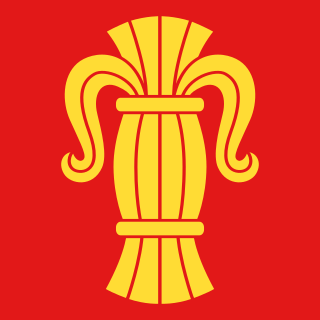
Vaasa, in the years 1855–1917 as Nikolainkaupunki, is a city on the west coast of Finland. It received its charter in 1606, during the reign of Charles IX of Sweden and is named after the Royal House of Vasa. Vaasa has a population of 68,049, and is the regional capital of Ostrobothnia. Vaasa is also well known as a major university and college city in Finland.

The Revolutions of 1917–1923 were a revolutionary wave that included political unrest and armed revolts around the world inspired by the success of the Russian Revolution and the disorder created by the aftermath of World War I. The uprisings were mainly socialist or anti-colonial in nature. Some socialist revolts failed to create lasting socialist states. The revolutions had lasting effects in shaping the future European political landscape, with for example the collapse of the German Empire and the dissolution of Austria-Hungary.

The Battle of Helsinki was a 1918 Finnish Civil War battle, fought in 12–13 April between the German troops and Finnish Whites against the Finnish Reds in Helsinki, Finland. Together with the battles of Tampere and Vyborg, it was one of the three major urban battles of the Finnish Civil War. The Germans invaded Helsinki despite the opposition of Finnish White Army leader Carl Gustaf Emil Mannerheim who wanted to attack the capital city with his own troops after Tampere had fallen on 6 April. However, the Germans had their own interest in taking Helsinki as quickly as possible and then moving further east towards the Russian border. The city had been under Red control for 11 weeks since the beginning of the war.

Battle of Lahti was a 1918 Finnish Civil War battle, fought from 19 April to 1 May between the German troops and Finnish Whites against the Finnish Reds in Lahti, Finland. Together with the Battle of Vyborg, from 24 to 29 April, it was the last major battle of the war.

Johan Erik Jorpes was a Finnish-born Swedish physician and biochemist. He identified the chemical structure of heparin and developed its clinical applications. Jorpes was the professor of medical chemistry in the Karolinska Institute in Stockholm in 1946–1963.
Mauritz Lorenzo Kihlman was a Finnish lawyer who acted as a procurator for Finland and after becoming independent in Finland as a diplomat and a member of the Supreme Administrative Court.

Georg Didrik Boldt was a Finnish philosopher of religion who was known as a socialist and tolstoyan.

Baptists in Finland have existed since the middle of the 19th century. They are part of the Baptist branch of Protestant Christianity and belong to three different Finnish church associations. Swedish-speaking Finns formed the Swedish Baptist Union of Finland, while Finnish-speaking Baptists are united in the Finnish Baptist Church ; two Finnish congregations are a part of the Seventh Day Baptists. In addition, a few independent Baptist churches exist, including Grace Baptist Church in Tampere. The congregation was formerly known as Perinteinen Baptistiseurakunta in Finnish and International Baptist Church in English. Agape International Baptist Church in Pedersöre is also among the independent Baptist churches.
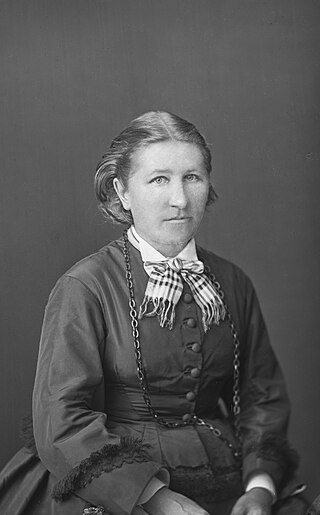
Anna Charlotta Heikel was a Finland-Swedish teacher and director of the School for the Deaf in Jakobstad, Finland, from 1878 to 1898. She was a temperance activist as well as a pioneer of the Baptist movement in Finland and early Sunday school founder.
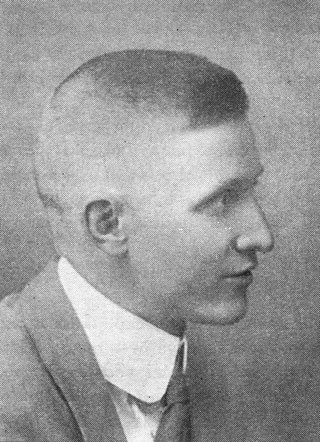
Allan Wallenius was a Swedish leftist figure and journalist from Turku. He was the editor of Ny Tid, paper of the American Communist Party between 1925 and 1929. He served as the director of the Communist International Library in Moscow. He was arrested during the Great Purge in 1938 and died in a prison in 1942.